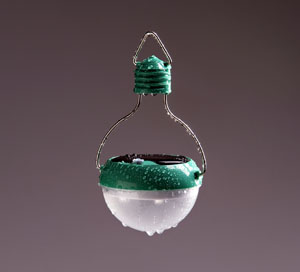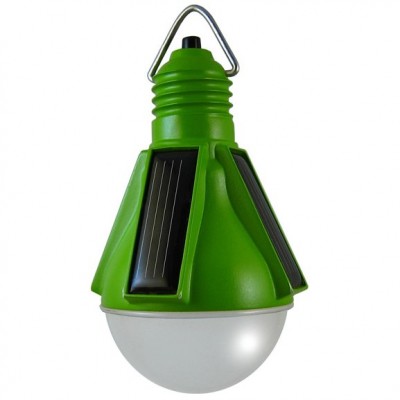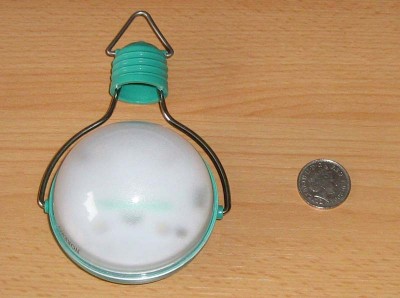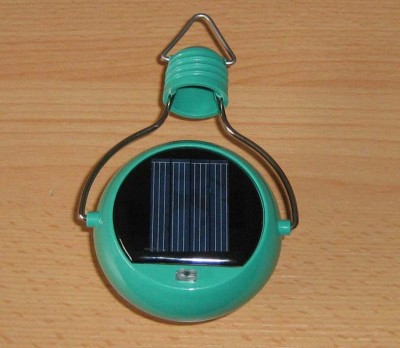
The Nokero N200 is a solar-powered lamp designed to reduce the dependence on the petroleum product kerosene, by being a replacement for the kerosene lamps typically used in the developing nations. According to Nokero, 25% of the world’s population still burn fossil fuels for light, contributing around 190 million tonnes of carbon dioxide every year. To be affordable to individuals on low wages, the lamps need to be practical, robust and affordable. And they are!

Nokero were kind enough to send me a Nokero N200 to review. Having heard of the Nokero N100 a little while ago, I was very keen to get my hands on one to play with. The Nokero N200 is considerably more aesthetically pleasing compared to it’s predecessor, in addition the N200 lamp is 60% brighter compared to the N100.
The Nokero N200 lasts for 6 hours on normal light mode, which I found to be impressively bright anyway. The ‘turbo-task’ mode is a much brighter setting, where the internal battery lasts only 2.5 hours on a single charge. For the majority of uses, such as camping or socialising, the normal brightness is perfect. If you want to do any reading or sewing, you will find that you need the ‘turbo-task’ setting to be able to see in such detail.


The lamp is designed to be rain proof, which definitely appears to be the case with the rubber-sealed switch, and tight plastic fittings. The solar panel is encapsulated in some kind of plastic resin, which further helps with weather-proofing and making the lamp very tough.
The construction certainly does feel very robust. I ‘accidentally’ dropped the N200 a few times, and it made a distinctive ‘thud’ rather than shattering. It’s not a delicate lamp, so it is going to last for ages. The most useful feature of the lamp is that the ‘locking’ metal hinge allows the lamp to be pointed towards the light very easily. I had the light hanging in the window, and I just angled the solar panel outwards to charge it up.
My concern with solar-powered lights in general are two-fold. One is the cost, as good quality solar-powered lights are expensive. However, the intended retail price for these lamps (for the developing nations) is just $15. Most solar-powered lights that I’ve encountered, typically fail within 12 months. Many lights fail within weeks! The average life expectancy of a Nokero N200 is 5 years, and given the quality of the product, I believe them.
The other issue I have is that the batteries will degrade over time, so unless the lamp is serviceable, it’s not a particularly viable alternative to kerosene lamps if the batteries need to be replaced every year. Nokero have thought of that, and the N200 batteries last between 2 to 3 years, but cost only $1 to replace. So in the average lifetime of a Nokero N200, you might need to replace the battery just once to get the full expected life-span.
The only odd thing I found with the lamp is that Nokero make a big deal about the fact that it’s shaped like a light bulb. I can understand that having a design that’s metaphorically similar to a light makes sense, to a degree anyway. However, developing nations are used to using a different type of light source (namely the flame lamps), so there’s no obvious parallel. The Nokero N200 is well designed, but the fact it’s shaped like a light bulb doesn’t feel like a selling point to me.
So in conclusion, the Nokero N200 is a fantastic little gadget, that helps developing nations and is completely practical in every respect. If you wanted some high-quality solar-powered lights for the garden (such as for parties), you’d do very well to buy a dozen of these. If you’re interested in the great things that Nokero are doing, you can find out more about what Nokero are doing on the Nokero Facebook Page.
Oh, and here’s a nice little fact to end with. The name NoKero comes from ‘No Kerosene’. I like that.


